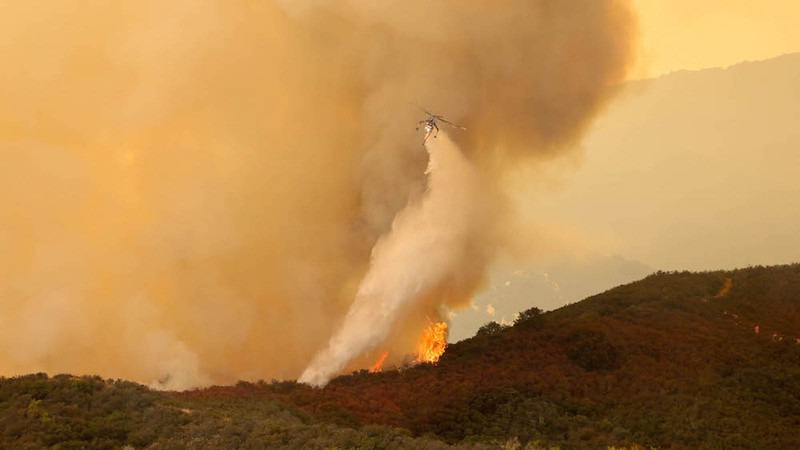
The federal government has suspended its 'let it burn' wildfire policy. Zackmann08 / Wikimedia Commons C.C. 4.0 Share-Alike License
On Wednesday, the same day that federal officials met with Gov. Gavin Newsom to promise a new commitment to helping California combat wildfires, a new fire ignited at a campground in Placer County, quickly spreading over 2,400 acres and destroying 50 structures while threatening another 3,400, according to a report by The Union newspaper in Nevada County, where the fire is also burning.
Almost 7,000 people in the two counties were quickly ordered to evacuate, according to a CNN report. Later on Thursday the fire had expanded to 2,600 acres, and was classified as 15 percent “contained” by Cal Fire, the state’s top firefighting agency. Three people, including a firefighter, had been injured by the fire.
Though the cause of the fire had not been pinpointed as of Thursday morning, the blaze — dubbed the River Fire — ignited in the town of Colfax on or near the Bear River Campground, an area managed by Placer County and owned by the California Department of Fish and Wildlife, which leases it to the county, so the land would not have come under federal jurisdiction.
But in his meeting with Newsom, Biden Administration Agriculture Secretary Tom Vilsack admitted the feds have not done a good job managing overgrown areas of forest that are especially vulnerable to flames, and where excess, dry vegetation adds fuel to already-burning wildfires.
Vilsack told Newsom that the federal government had long tried to manage its forests “on the cheap.” But that policy “has caught up with us,” he said, adding also that the federal government would shift its so-called “let it burn” policy, under which federal firefighters simply “monitor” new fires, moving in to fight them only when they get out of control.
The Tamarack Fire, which has burned almost 70,000 acres in the Humboldt-Toiyabe National Forest near the state border with Nevada, started with a lightning strike on July 4. Federal firefighters held back until July 16 when high winds suddenly accelerated the blaze. That fire is still burning, though officials say it has been 78 percent contained.
The United States Forest Service said in a letter this week that the “let it burn” policy would be suspended as long as fires in the western states continued to burn.
Forest management has also been a problem at the state level, however. According to a Twitter post by UCLA climate scientist Daniel Swain, the River Fire started in an area with no previous history of fire, meaning that it has not been cleared of highly flammable vegetation that has been badly dried out by drought conditions.
Short articles summarizing reporting by local news sources with linkbacks to the original content.